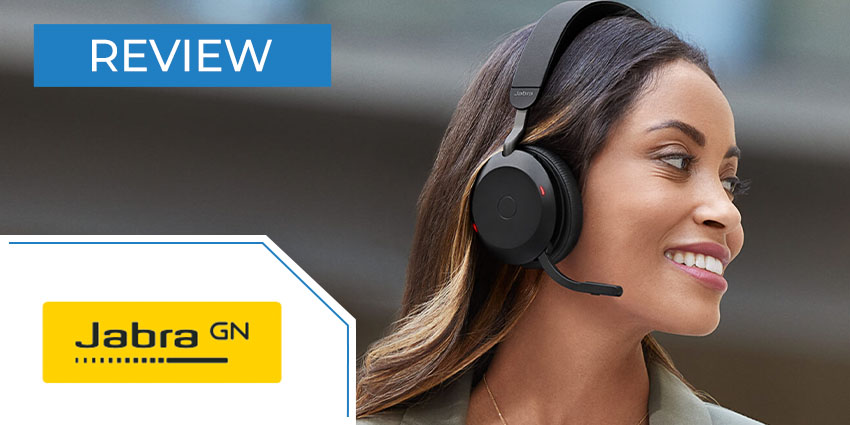Whether it is being run in your data centre or online, Skype for Business is hard to beat if you prize flexibility from your UC solutions. On desktop PC and comms endpoints, laptop or mobile device, Skype for Business provides a comprehensive range of options including IM, collaboration, video and voice.
Although multichannel options are the big trend in modern unified communications, voice remains crucial for a majority of businesses. This is where Skype for Business comes under most scrutiny – Microsoft has done a lot work selling its suitability as an enterprise-grade PBX platform, for example.
Another issue is audio quality. How do you, for example, guarantee good audibility in a busy office when making Skype for Business calls on a laptop? Do you always have to connect to a desk phone? Is that even the best solution?

Not according to Henrik Thørring, strategic alliance manager at Sennheiser. The Danish manufacturer specialises in headphones and headsets for business and personal use, as well as speakerphones and conference peripherals. “What we call our professional headsets all have an integrated microphone, usually on a boom arm,” said Henrik. “These are for business use and all products we have in this category are certified Skype for Business compatible.”
Henrik argues that Sennheiser headsets not only improve audibility when using voice platforms at work, they also increase flexibility and mobility, providing more options for where you can communicate. He explained that the company works with Microsoft to be able to offer products that add value to Skype for Business deployments.
Four steps to choosing the right headset
“The first thing you want to look for when choosing a headset is obviously interoperability with your soft line or your desk phone,” said Henrik. “This is not just about technical compatibility, which is what we work on with Microsoft. Also consider functions – can you answer the call on your headset, can you mute, can you turn the volume up and down, can you put the call on hold?”
Henrik added that choice of connector is also important if you want the flexibility to use your headset with both soft phone apps and desktop endpoints.
“I’d estimate that two-thirds of our products now have USB connectors,” he said. “Vendors are including USB ports on desk phones specifically for headsets – the likes of Snom, Yealink, AudioCodes, Alcatel-Lucent, Cisco, and Polycom was one of the first.
“The advantage is that USB doubles up in compatibility with softphone platforms like Skype for Business. On our Century and Circle ranges, we also provide USB adapter cables which include universal connections to legacy desk phones.”
After interoperability, Henrik says the next consideration is audio quality. “A lot of people work in group environments in an office. If you are on a call, you shouldn’t get too much of the noise in the environment coming through, either on the microphone or the earphones.
“Frequently, VoIP users will check that audio is coming through their end without considering how it sounds the other end. But you need good audio on both, which is why microphone performance is just as important as the speakers. You should always look for good noise cancellation on the microphone, especially in contact centres where you might be sitting quite close.”
Henrik added that there is also a PCI compliance consideration with this. “If you take customer details, like a credit card number for example, and read it back for confirmation, you do not want this to be picked up by the microphone next to you.”
The next two steps to choosing the right headset are comfort, durability and design, said Henrik. “Users want to know how well a headset sits on their ears. Is it comfortable? You may have to use it throughout your working day, it shouldn’t feel intrusive.
“Finally, headsets are an investment. You don’t want to be replacing them too often. So first of all you want a warranty in case they break, but really you want a product that lasts much longer.”
Matching your headset to use scenarios
Henrik explained that Sennheiser matches its headsets to different use scenarios in the workplace to help customers make their decisions.
“The first we talk about is the desk worker,” he said. “These are people who do most of their work at their desk, or at least use the telephone there for the most part. For these situations, wired headsets work well.”
Sennheiser offers four ranges of wired headset, the Century, Circle, Culture and Culture Plus series, which offer hands-free VoIP with noise cancelling microphones and quality speakers.

“The second use scenario is the office worker,” said Henrik. “These people also work from a desk in their workplace, but need a bit more mobility. They might work between areas, different meeting rooms, departments, teams etc. They might also be typically involved in longer conversations on the phone, and want the option to get up and move around as they do. These are workers who benefit from wireless headsets.”
Sennheiser manufactures headsets which use two wireless technologies – DECT, which can provide a signal range of up to 50m from the base station in most offices, and Bluetooth.
“Bluetooth consumes less power,” said Henrik, “so you might get, say, two days use on a single charge compared to just one with a DECT device. But the trade off is that the Bluetooth range is much shorter.
“Wireless headsets cost more than wired, so choosing between desk worker and office worker scenarios is a case of weighing up who really needs wireless compared to who would like wireless, and deciding if the extra cost is justified.”
Henrik added that Sennheiser also produces dual-function models which offer greater flexibility. The Culture Plus series is a hybrid wired and wireless headset, while the MB Pro series can operate on both DECT and Bluetooth signals.
The final use scenario Sennheiser uses to categorise its products is mobile worker. “As well as mobility in the office, you might want to consider as a means to connect your headset to a mobile device,” said Henrik. “For complete flexibility, you would want a product that connects to both you office PC and your mobile device for when you are on the move.”
“Our Presence series is more of an earpiece solution than a headset. It actually has in my opinion the best noise cancellation of our entire product range, even very strong ambient noise is filtered out very effectively. This makes it a perfect mobile solution, it is brilliant for example at filtering out wind noise.”
Finally, Henrik said there was a decision to be made between single-sided and double-sided headsets for office and work use.
“Single-sided is popular in contact centres as you can still hear what your supervisor is saying,” he said. “Double-sided is better if you want to focus on longer conversations, perhaps.”






